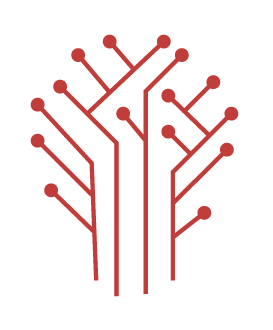-
Новости
- ИССЛЕДОВАТЬ
-
Страницы
-
Статьи пользователей
-
Courses
-
Кинозал
How AI and Robotics Are Transforming Smart Agriculture

Technology is no longer limited to factories, offices, or homes — it has entered farms and fields, reshaping agriculture in ways our grandparents could never have imagined. With the global population rising and food demand increasing, farmers face pressure to produce more with fewer resources. This is where artificial intelligence (AI), robotics, and embedded systems step in, creating a revolution in smart agriculture.
What Is Smart Agriculture?
Smart agriculture refers to the use of modern technologies such as IoT sensors, AI-powered tools, and robotics to make farming more efficient, sustainable, and productive. Unlike traditional methods that rely heavily on manual work and guesswork, smart agriculture uses data-driven insights to improve soil health, crop monitoring, irrigation, and even harvesting.
For example, farmers can install soil sensors to measure moisture levels in real time. Instead of flooding the entire field, they can deliver just the right amount of water exactly where it’s needed. This reduces waste and ensures healthier crops.
AI in Farming
Artificial intelligence plays a huge role in analyzing large amounts of farming data. Drones equipped with AI-powered cameras can fly over fields, capturing images that detect crop diseases, pest infestations, or nutrient deficiencies. Algorithms then process these images and alert farmers before the problem spreads.
Predictive models also help farmers decide the best time for planting or harvesting by analyzing weather patterns, soil data, and past yields. This proactive approach not only boosts productivity but also helps reduce losses caused by unpredictable climate conditions.
Role of Robotics in Agriculture
Robots are becoming indispensable partners in farming. Autonomous tractors can plow fields without human drivers. Harvesting robots gently pick fruits and vegetables with minimal damage. Weeding robots use computer vision to identify and remove unwanted plants, reducing the need for chemical herbicides.
Many of these robotic systems are built using affordable microcontrollers and embedded platforms. Businesses often prefer to hire remote arduino developers to design custom robotic solutions that suit local farming conditions. Arduino boards make it easier to prototype and deploy cost-effective machines for small and medium-sized farms.
IoT and Smart Sensors
The Internet of Things (IoT) has unlocked new possibilities for agriculture. With connected sensors placed in soil, livestock enclosures, and irrigation systems, farmers can monitor their land and animals in real time.
For instance, temperature and humidity sensors can detect when greenhouses become too hot or too cold, automatically adjusting ventilation systems. Livestock monitoring devices track animal health and alert farmers if unusual patterns are detected. These systems make farming less labor-intensive and more precise.
Developers working with IoT often build prototypes using platforms like Raspberry Pi. In fact, startups in the agritech sector frequently hire raspberry pi developer experts to create monitoring systems that integrate cameras, cloud storage, and AI analytics into one compact solution.
Benefits of Smart Agriculture
The advantages of integrating AI, robotics, and IoT into agriculture are significant:
-
Higher Productivity: Data-driven insights help maximize crop yields.
-
Resource Efficiency: Smarter irrigation and fertilization reduce waste.
-
Cost Savings: Automated machines cut down labor expenses.
-
Sustainability: Reduces the need for harmful chemicals, preserving the environment.
-
Improved Quality: Early detection of diseases and better monitoring lead to healthier produce.
These benefits are especially valuable as farmers face challenges like shrinking farmland, labor shortages, and climate change.
Challenges in Adoption
Despite its promise, smart agriculture faces hurdles. High upfront costs for robotics and IoT systems can discourage small farmers. Technical knowledge is also required to operate and maintain these devices, which can be a barrier in rural areas.
Another issue is connectivity. Many farms are located in remote regions with limited internet access. Without strong networks, IoT devices cannot transmit data effectively. Governments and private organizations need to work together to bring affordable connectivity solutions to these areas.
Cybersecurity is also a growing concern. As farms become more connected, they could become targets for data breaches or system disruptions. Protecting agricultural data will be as important as securing financial or healthcare information.
The Future of Farming
The future of farming will likely be a blend of traditional wisdom and modern technology. AI-driven platforms will provide farmers with predictive analytics, while robotics will handle repetitive physical tasks. IoT devices will ensure that every drop of water and gram of fertilizer is used efficiently.
Vertical farming and hydroponics, powered by automation, will bring agriculture into cities, reducing transportation costs and providing fresher produce. Drones will deliver real-time data, while blockchain could track food from farm to table, ensuring transparency and trust.
Conclusion
Smart agriculture is not just a trend — it is a necessity for the future. With rising global food demands and environmental concerns, farmers must embrace technology to produce more efficiently and sustainably. AI, robotics, IoT, and embedded systems are already proving their value in fields around the world.
By integrating affordable platforms like Arduino and Raspberry Pi, even small farms can join this digital revolution. The journey may face challenges, but the opportunities are vast. As technology continues to advance, agriculture will become smarter, greener, and more productive than ever before.
- Art
- Causes
- Crafts
- Dance
- Drinks
- Film
- Fitness
- Food
- Игры
- Gardening
- Health
- Главная
- Literature
- Music
- Networking
- Другое
- Party
- Religion
- Shopping
- Sports
- Theater
- Wellness


